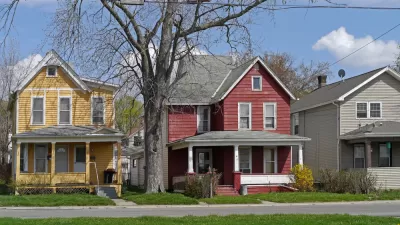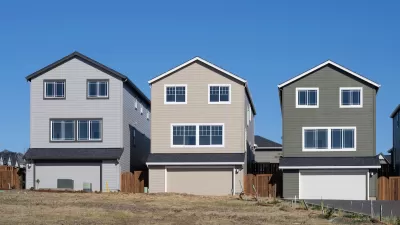For low-income residents in high-cost areas, there's no substitute for the public sector to provide below-market rate housing. But for middle-income households, the market should be able to produce housing without subsidy. So why doesn't this happen?

In a previous Shelterforce blog post, I argued that we cannot give up hope that the market will build middle-income housing. Granted, over the past decade, most new housing has been built in the luxury segment of the market, yet some argue that this isn’t a problem because the luxury housing naturally "filters" down and eventually offers everyone the benefit of lower rents and prices. I agree that refusing to build luxury housing (in the face of rising demand from wealthy households) will only make the housing problem worse for everyone else, but exclusively building luxury housing is no strategy for addressing the housing problems of low-income or even middle-income people.
For low-income residents in high cost areas, there is no substitute for public sector action to provide below-market rate housing, but for middle-income households, the market really should be able to provide appropriate housing without government subsidy. It is not doing that now, but we shouldn’t give up on the idea because ultimately it will bring more benefit to a wider segment of the population than luxury housing can.
So why doesn’t this happen?
This is a surprisingly complex problem that is made all the worse by the fact that everyone seems to expect it to have a very simple answer. In local policy discussions, I hear two grossly simplistic answers that I believe do more harm than good. Some people seem predisposed to conclude that we don’t build more moderate-income housing because of developer greed. Another group of people want the culprit to be unnecessary government regulation. Both explanations stand in the way of really understanding the problem and doing something effective to solve it.
Do Developers Focus on Luxury Housing Because They’re Greedy?
Of course developers are motivated by profit, but I don’t think there is any reason to believe that real estate developers are any more (or less) greedy than producers in any other industry. Yet when you look at most other consumer goods, the market provides options at a range of price, and quality, points. In the auto market, working class and middle-income people don’t all drive 40-year-old BMWs and Mercedes, many buy brand new Ford Focuses and Honda Civics.
While some of the most profitable cars on the road are luxury cars, the Ford F-150 pickup truck and the Toyota Camry are also at the top of the list, and it’s not hard to see why. In 2016, Toyota sold almost 400,000 new Camrys and nearly as many new Corollas. Their best selling luxury car, the Lexus EX, sold only 50,000 units. Even assuming they earn a much higher margin per car, luxury models are not better investments because the volume is so much lower.
It is pretty clear that the real estate industry would make vastly more money if it were to build more housing for middle-income households, even if the profit per unit were lower on those projects. So the problem can’t be as simple as greed.
FULL STORY: Why Aren’t We Building Middle Income Housing?

Alabama: Trump Terminates Settlements for Black Communities Harmed By Raw Sewage
Trump deemed the landmark civil rights agreement “illegal DEI and environmental justice policy.”

Planetizen Federal Action Tracker
A weekly monitor of how Trump’s orders and actions are impacting planners and planning in America.

The 120 Year Old Tiny Home Villages That Sheltered San Francisco’s Earthquake Refugees
More than a century ago, San Francisco mobilized to house thousands of residents displaced by the 1906 earthquake. Could their strategy offer a model for the present?

Ken Jennings Launches Transit Web Series
The Jeopardy champ wants you to ride public transit.

BLM To Rescind Public Lands Rule
The change will downgrade conservation, once again putting federal land at risk for mining and other extractive uses.

Indy Neighborhood Group Builds Temporary Multi-Use Path
Community members, aided in part by funding from the city, repurposed a vehicle lane to create a protected bike and pedestrian path for the summer season.
Urban Design for Planners 1: Software Tools
This six-course series explores essential urban design concepts using open source software and equips planners with the tools they need to participate fully in the urban design process.
Planning for Universal Design
Learn the tools for implementing Universal Design in planning regulations.
Clanton & Associates, Inc.
Jessamine County Fiscal Court
Institute for Housing and Urban Development Studies (IHS)
City of Grandview
Harvard GSD Executive Education
Toledo-Lucas County Plan Commissions
Salt Lake City
NYU Wagner Graduate School of Public Service



























